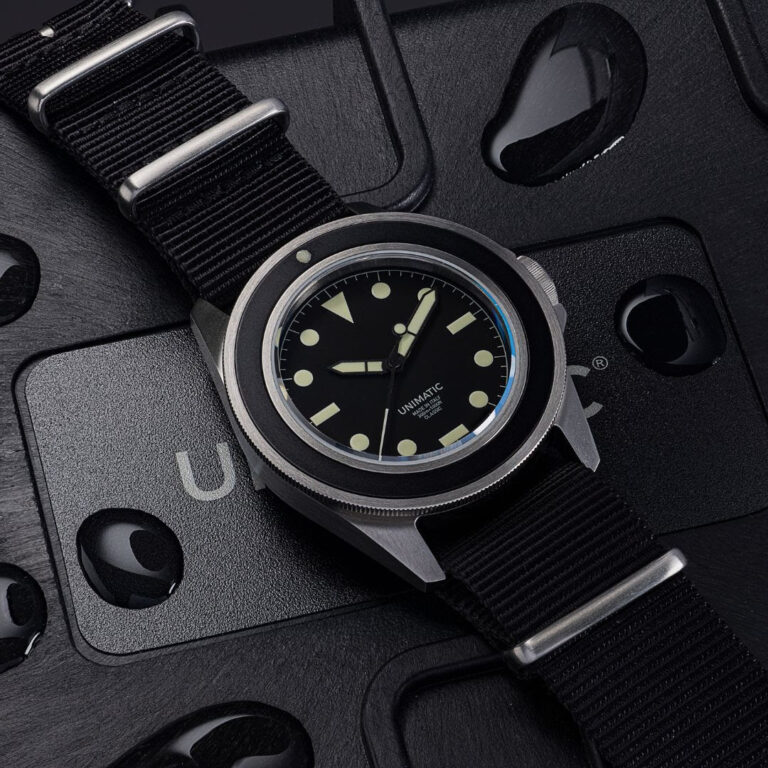This story originally appeared on the Gents Cafe Newsletter. You can subscribe here.
A Q&A with Giovanni Moro, UNIMATIC’s Co-founder and Designer
Hi Giovanni, tell us a little about your background and where you first met your co-founder Simone Nunziato.
We first met at Politecnico di Milano in early 2000, where we were both attending the product design course. After graduation, our lives took different paths, with Simone moving to London (where he still currently resides), and myself working in the furniture design sector for many years.
However, we stayed in touch during these years, discussing watches frequently and analyzing different brands and models. Eventually, we decided to create a re-imagined minimal and functional diving watch, simply for the sake of bringing our imaginative discussions to life.
Thus, the Modello Uno was born.

What first got you interested in watches, and when did you decide to start your own brand UNIMATIC?
I’ve always been fascinated by watches from a designer’s standpoint. The watch, if you think about it, is a very accomplished, realized, completed item. Years of progressive polishing and progressive improvement, trials, and errors done by other companies during more than one hundred years of evolutive design led to a checklist for what a good wristwatch should look like.
Similarly to a hammer, in which the performance is dictated by a heavy head on a solid handle of appropriate length, there are some features and mechanics you can’t forget also when designing a watch. Of course, modern hammer designers can get full crazy with different claw shapes, innovative materials for the handles, fancy decorations, trims, and colors. But still, you’ll always need the handle and the head to play by the rule of “hammer-ness”.
Analog watches work with hands that rotates constantly over a dial, with the polar coordinates providing a conventional indication of what time is it. The most straightforward and perfect shape for this to happen is a circle.
A wristwatch is worn on a human wrist, with a 95 percentile diameter of 19.3 cm (NASA anthropometric study year 2000, male 40 yo in the USA), which dictates appropriate sizing.
The reading of time is done under many different light conditions and external circumstances out of the user’s control, this requires the graphics to be easy to orient and read, with the appropriate contrasting color schemes.
In the case of a diving watch, you also want to have water resistance to be able to carry the job underwater, and you will have minimum thickness and construction geometry for the parts exposed to the strong outside water pressure.
The list goes on, but you got a quick primer on what matters in tool-watch design.
These basic concepts formed the design grammar we wanted to follow back in late 2015 and still stand for any assignment we take.
How did you get to the name UNIMATIC?
The name UNIMATIC is a made-up word merging uni-que and auto-matic, with an implied reference to the uniqueness of each reference and to the autonomous function the products have in keeping time.
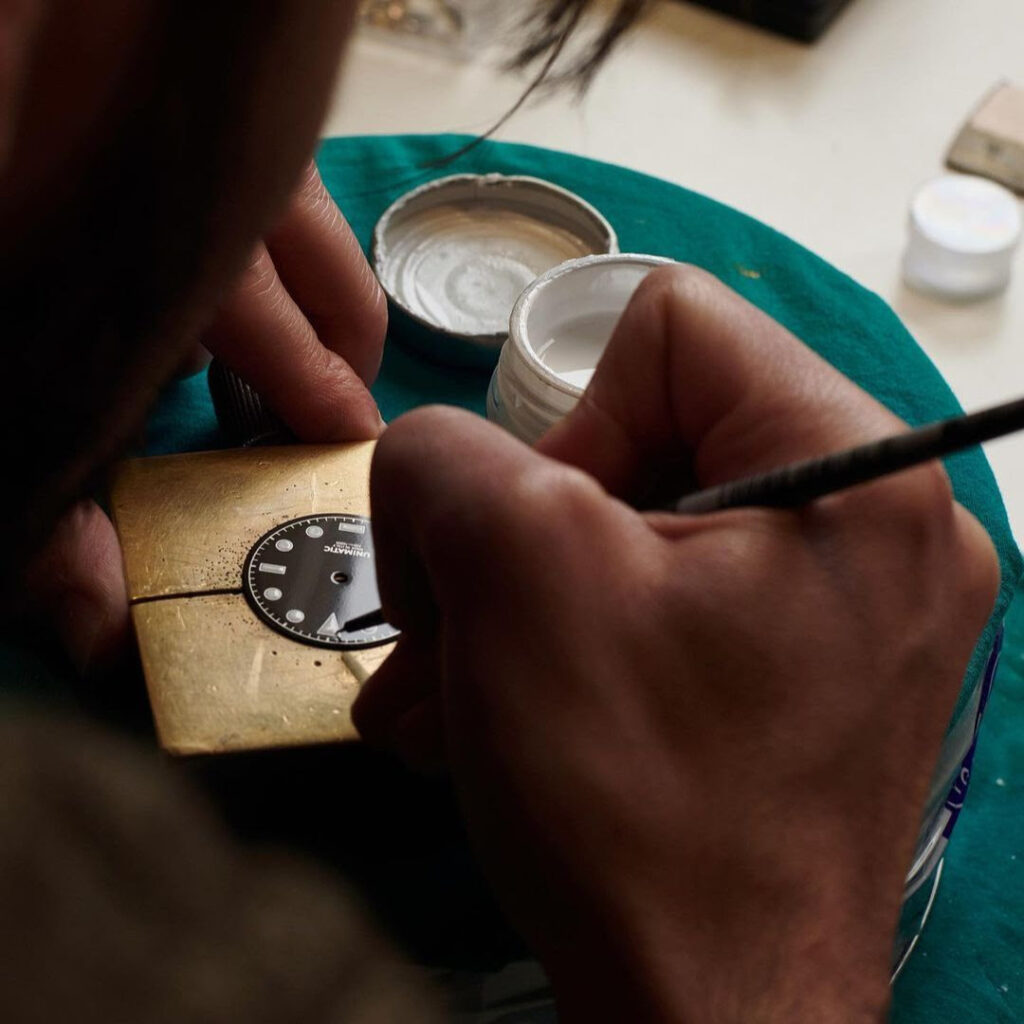
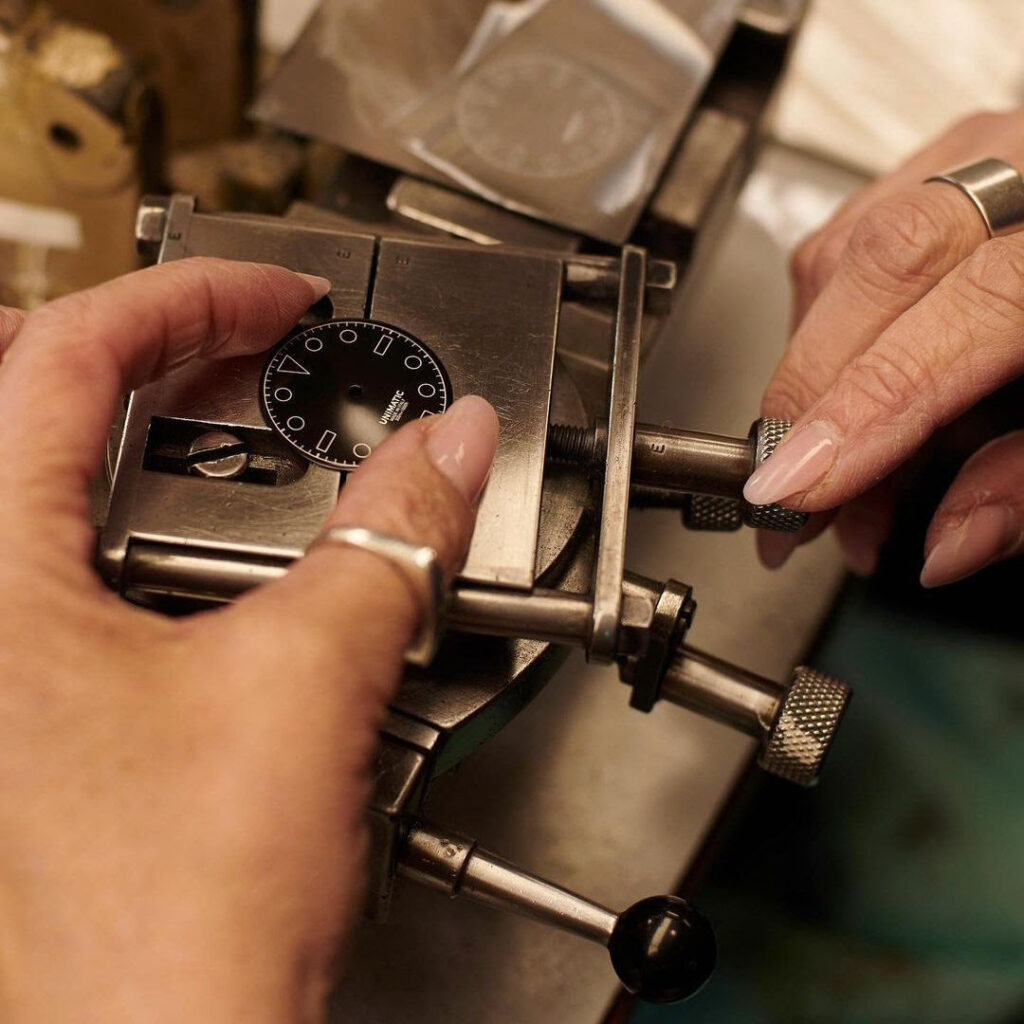
What’s the philosophy behind the brand, what are its core values, and what makes it different in the watchmaking space?
Our ambition is to get to the very root of watch design and deconstruct it into pieces that we can later reassemble, making use of technical improvements we can access or develop. We aim to hybridize our DNA with collaborations and editions targeted at specific concepts, seasons, or audiences.
Many other successful brands in the watch industry have taken possibly easier and surely more profitable roads. I admire them for the amazing success they have achieved, and I’m happy to support them for all the “wrong” designs they manage to market. This digs a bigger niche for us to exist and strive for something better.
We were born differently, possibly because we’re Italians in a market dominated by Swiss brands. UNIMATIC prides itself on being a design-driven company. Even though we’re a dwarf among giants, we humbly try to respect good design principles in everything we do.
We started UNIMATIC for fun when we were young and naive. Now we are not young anymore, but we’re still crazy enough to think that our work can be classicized while we do it.
How do you approach design, and where do you find inspiration for new products?
We try to follow our own grammar and have a function-driven approach to each design. Inspiration is in the state of the art of watchmaking, graphic design, architecture, and industrial technique.
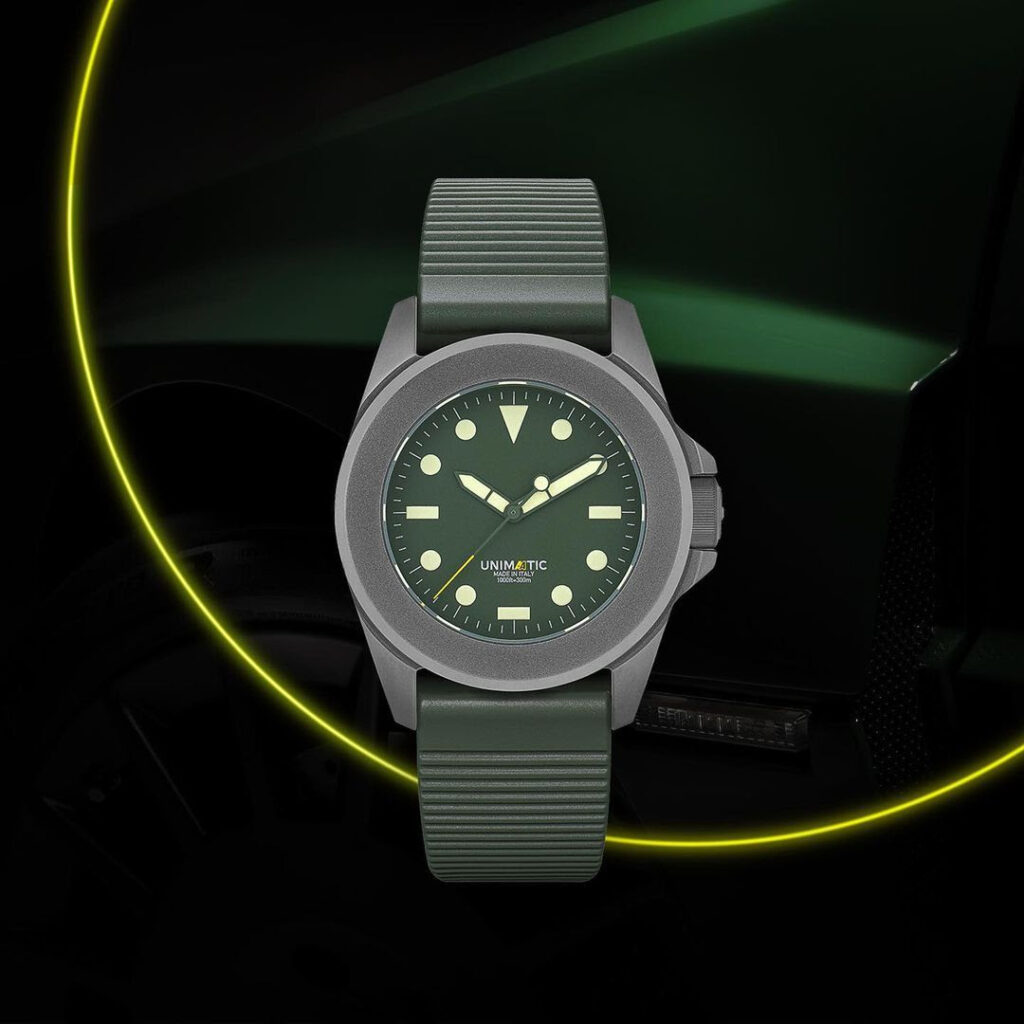
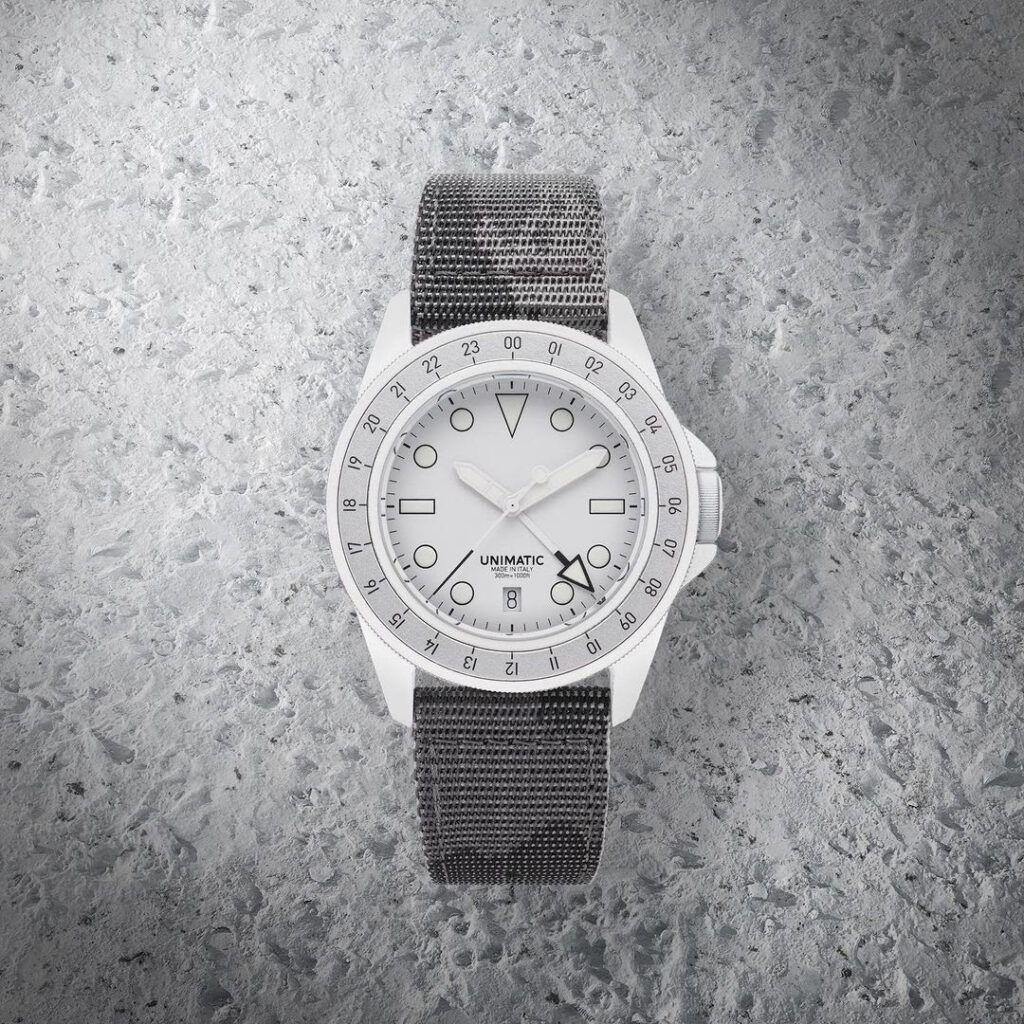
UNIMATIC has created a series of limited editions which are already sold out as already-cult items, such as the following (among many): Colette, Hodinkee, Massena Lab, Nigel Cabourn, SpongeBob, and Nasa. How did you come up with these collaboration ideas, and how do they fit with your brand’s vision and approach?
I think there’s a redline between all of the collaborations we launched, and a glimpse of how prismatic and multifaceted a UNIMATIC, or generally speaking a watch, can be. The layering of symbolical meaning that goes together with a wristwatch in the year 2023 is the space in which we try to carve some meaningful occasion for a collab program to be born and thrive.
How has UNIMATIC evolved over time, and how do you see it in the future?
We try our best to improve our products, presentation, and process release after release. If you check a vintage UNIMATIC and a modern production one, you will be able to see some improvements in the movements we use, the graphic design, the material of the strap, etc. We want to keep UNIMATIC as an iterative process itself, and this will be also the road I would like to keep for the future of our company.
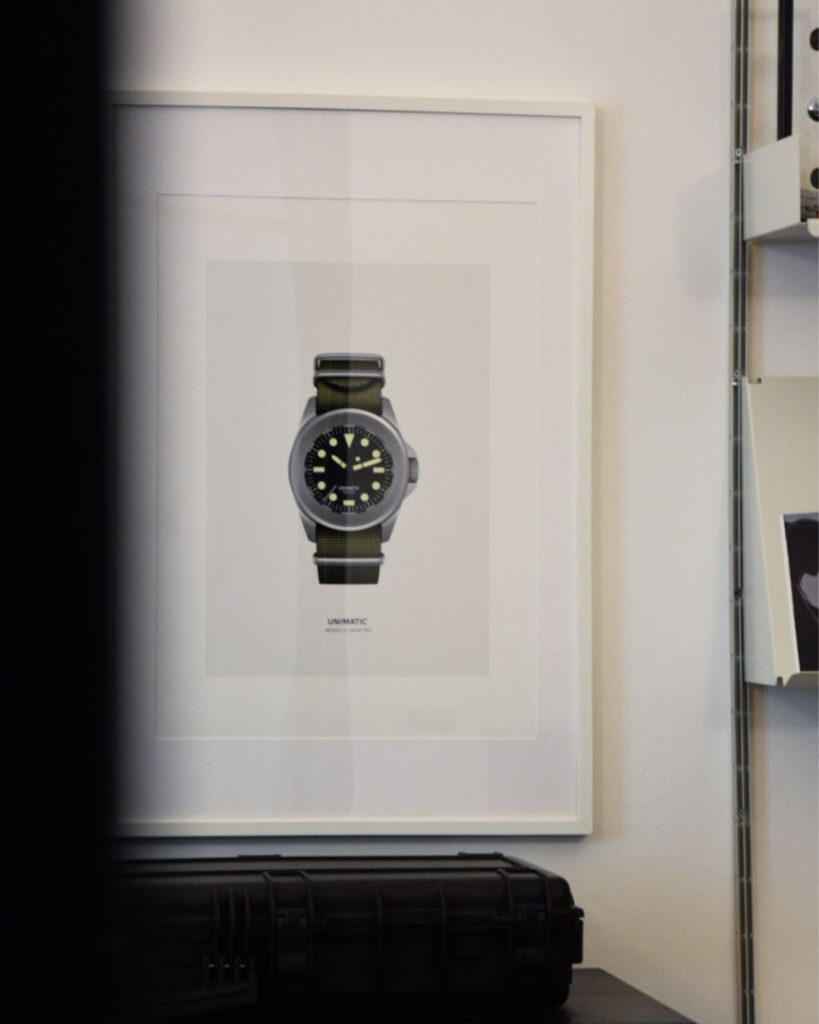
What have been the biggest challenges that you had to face during UNIMATIC’s entrepreneurial journey?
The list could be endless, but from my point of view the biggest challenges are always linked to anything outside product design (our only true field of expertise). Everything else from accounting to sales to logistics etc is a process we are learning while we do it, and in the meantime trying to build up a lean structure of people and company that can help us in achieving the constant improvement we’re after.
Leave us with a motto that the company will always believe in.
The struggle itself toward the heights is enough to fill a man’s heart.
― Albert Camus
Never miss a story – subscribe now to the Gents Cafe Newsletter, a bite-sized read about men’s lifestyle to enjoy over a coffee or a nice cocktail.
